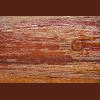- 0
Sign in to follow this
Followers
0

Masking Strategy for Acrylic Strip Directly Above Green Lawn??? Aye Yaye
Asked by
fireandrain

Asked by
fireandrain
Well I begin a Acrylic Strip next week and I'm in pre-flight mode I guess you could say, just reviewing the project photos I took a couple weeks back of this project. My big concern, the one I';m really wrestling with has to do with how to handle a heavy strip of the portions of this redwood deck which are DIRECTLY above a nice green lawn...
A few job notes:
1. Heart Redwood Deck, Appx. 15 years old.
2. Current Existing Finish: "ACE WoodRoyal" Acrylic-Alkyd Semi Trans. Failing on floor, intact on vertical.
3. The Current Plan: Strip NaOH followed by floor and vert sanding.
Have a gander at the photo here, but my big concern is how best to avoid killing this nice green lawn that surrounds the deck and is located directly below these benches.
Here is my current thinking.
Option #1: Heavily water down the lawn (say 5 ft. out from the benches). Lay some tarps down on the lawn, perhaps alternating layers of canvas and plastic tarps. Hit the back-side of the benches 8oz. p/g NaOH. Rinse.
Remove tarps carefully with a helper, hopefully being able to dump stripper run-off away from lawn area.
Option #2: No stripper use on back side of benches. Instead, remove old acrylic finish by sanding.
I'm leaning towards Option #2. The main issue I see with this approach is the following: The vertical surfaces of the benches are constructed with tongue and groove redwood siding. The stripping approach in Option #1 would allow me to strip the old acrylic from between the cracks, or the "grooves" of the bench siding material, however, if I instead take the sanding approach, I may not be able to sand out the old acrylic in the horizontal grooves of the benches.
Does this make sense?
So, to strip or sand, this is my dilemma! Strip and may end up killing these nice homeowners beautiful green lawn around the benches. Sand, and I may be left with old acrylic stain stuck in the grooves of the tongue and groove bench "walls", the backside, above the lawn.
Final note: I'm hesitant to do any aggressive sanding to remove the old finish on the leading edge of the bench siding for fear of disfiguring the horizontal grooves of the benches. Does that make sense?
I'm left REALLY wanting to be able to strip these benches so I can remove all of the old acrylic from he cracks of the "grooves".
Question is, how can I accomplish this without killing green law that my stripper will run-off to? Will temporarily tarping the lawn beneath those benches to enable me to do a heavy strip kill the law as well? The last thing I want to do is have my clients return from their vacation to a professionally restored deck with a dead lawn surrounding their deck.
Any input would be greatly appreciated and sorry for the long-winded post!
Share this post
Link to post
Share on other sites